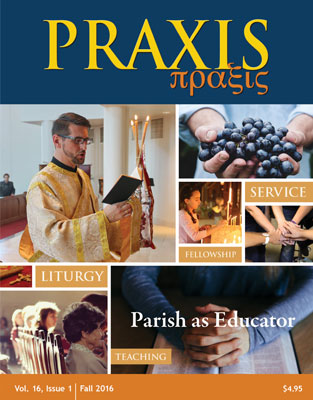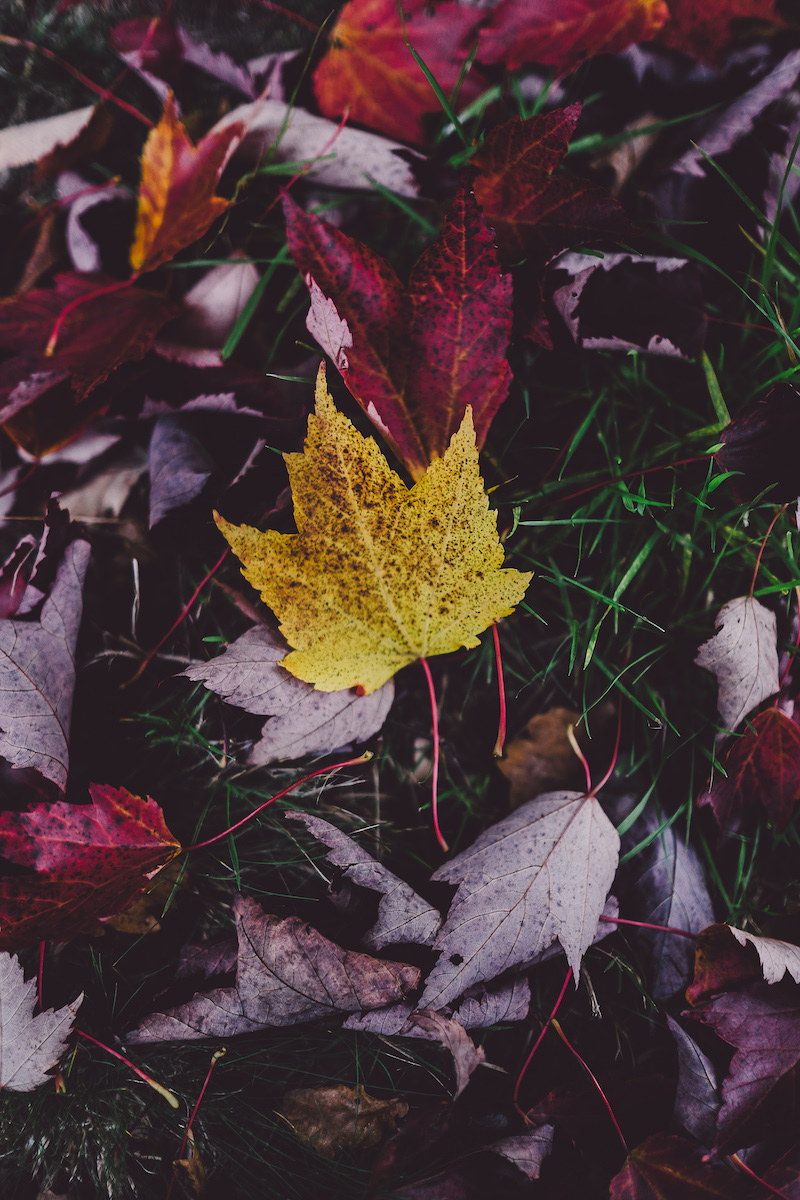
This article is from PRAXIS volume 16 issue 1: "Parish as Educator" (Fall 2016).
We all have moments that stick with us. Some of them remain ingrained in our hearts and minds for dramatic reasons—these are the life changers, for better or worse. Some are subtle yet profound. Those remain with us in a different way, shaping our perspective, causing us to reflect from time to time.
One of these moments takes me back several years to a casual stroll in a cemetery not far from my home. It was a blustery October day, the trees giving in to the wind, swaying in the brilliant sunshine. I had my youngest son in a stroller; as we moved along the hilly walkways and up the grassy knolls, he was bundled up and happily chewing on his blanket. We were talking about the wind and, of course, all the pretty leaves swirling and dropping around us. Every once in a while, I’d pick one up and show him. Only sort of impressed, he’d hold it for a bit then crunch it in his tiny fist or just drop it. The blanket was more interesting—and more tasty.
But my attention remained; I felt rather gripped by the moment. There was something about the chilly wind and gorgeous falling leaves surrounding us—something in it about God’s power and glory. The leaves’ rich palette was stunning: different shades of gold, red, orange, purple … even blue. How could such things be? And right there in my son’s little hand! There was a sense that this was a special moment. I even thought of Ralph Waldo Emerson’s line about the “perfect exhilaration” he sometimes felt while doing the simplest things, such as “crossing a bare common, in snow puddles.”
And something else came to mind in that moment: how important and integral creation is to the liturgical and sacramental life of the Orthodox Church. For the faithful, instances of recognition like this aren’t just the gifts that come from certain subtle and private moments; they are gifts of our worship and the great cycle of yearly feasts and celebrations.
Over the centuries and in her creative wisdom, the Church—the greatest teacher of our lives—has invited the natural beauty of God’s creation into her embrace.
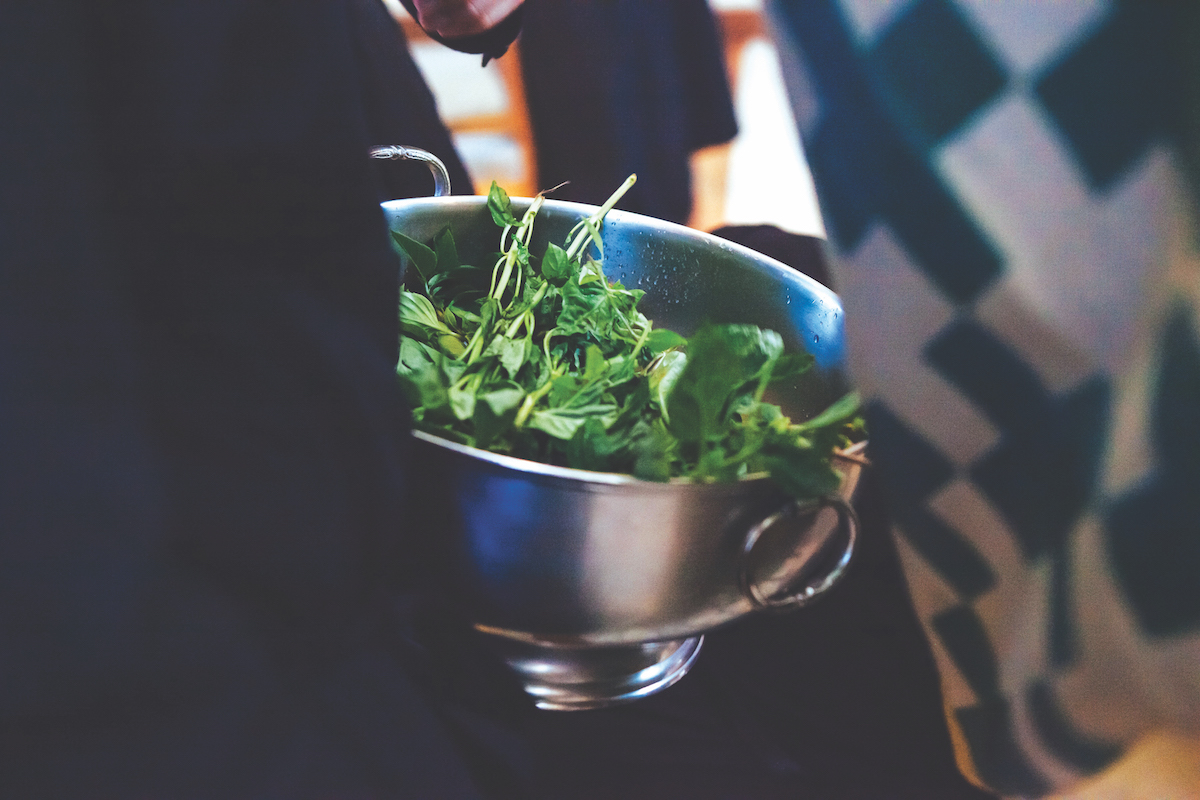
Think about it. On September 14, the Elevation of the Cross, we adorn the processional cross with a tray of basil, reminding us of the sweetness of the God’s kingdom. On January 5 and 6 in the services of Theophany, we remember the Lord’s baptism by blessing water, which is then sprinkled upon the faithful, their homes and even their cars. As we approach Holy Week in the spring, our churches overflow with fragrant palms and flowers, indicating the glory of Christ’s saving love. Some of us will bring greens to our churches for Pentecost as well, symbolizing the “greening” and springtime of our hearts by the gift of the Holy Spirit. When we celebrate an Artoklasia service (blessing of the five loaves) for one of our parish feast days, we utilize wheat with the bread that is blessed; further, we are called to put this bread to use after the service by feeding those in need of nourishment, and we are called to use this moment as an inspiration to do even more outreach in the future.
Over the centuries and in her creative wisdom, the Church—the greatest teacher of our lives— has invited the natural beauty of God’s creation into her embrace.
If we consider it, even the great sacraments of the Church utilize the bounty of creation: grapes and wheat are used with the Eucharist, olives with the oil of chrismation and unction, water with baptism … and this is just touching the surface.
It’s really amazing to think about. To help us understand the sublime and unique relationship we have with God, created in His image and likeness, the Church has surrounded us with other elements of His creation. The glory of the natural world reminds us of the glory of His creative power, right there in our narthexes, naves and sanctuaries. We understand that everything He has made is good and should be utilized to give thanks to Him—or otherwise put to use for purposes that serve the Gospel.
Every time you or I walk into church and see a flower, bottle of Holy Water or palm cross, God’s energy is there, trembling with brilliant power, nudging us from our slumber, revealing things to us, teaching us. These realities have always been there for us. It’s just a matter of seeing them or perhaps seeing them with new eyes.
With all this in mind, there’s something else we can see with new eyes that might take us even further. I’m thinking of St. John Chrysostom’s oft-quoted declaration (from his Homily 20 on Ephesians), which shows up in many sermons, Sunday school curricula and retreats: “For indeed a house is a little church.”
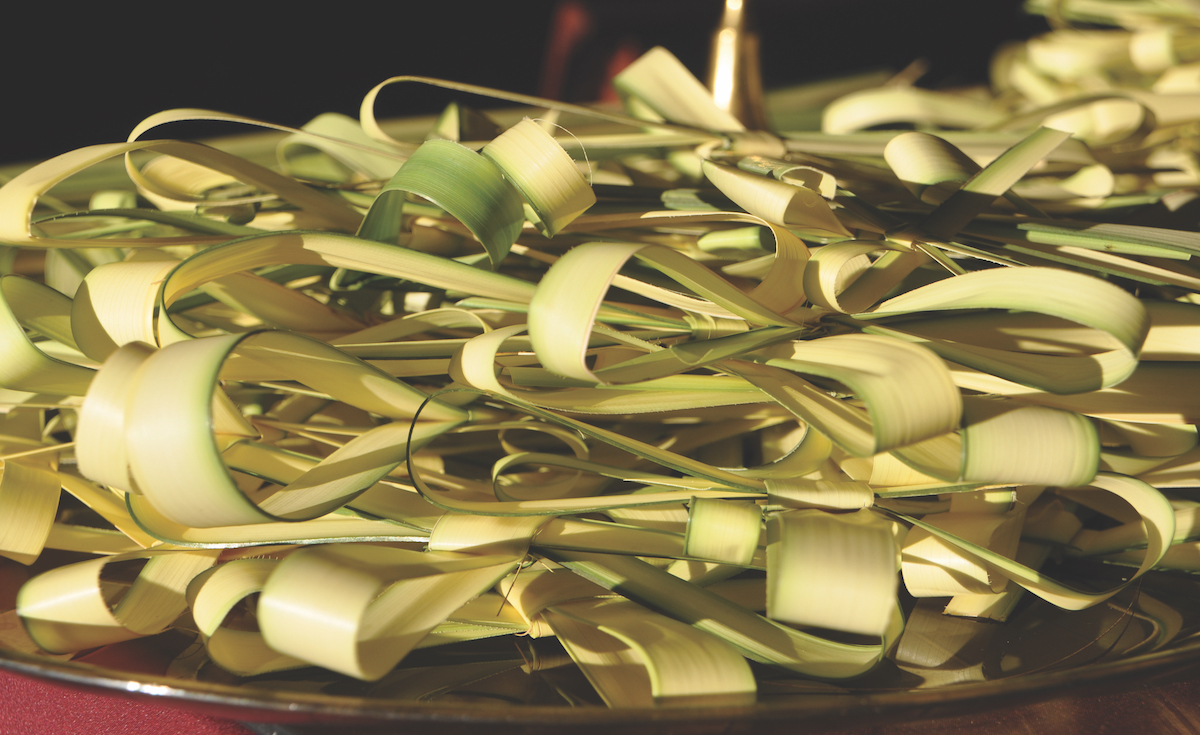
For so many of us, it certainly is a goal to perceive our homes as little churches and make our homes places where we, and our children, may discover and rediscover God each day. And if this is so, and if the Church—again, our greatest teacher—utilizes the wonders of God’s creation in her life, is it not also wise to try and do the same in our own “little church”? In fact, reflecting on this possibility might not only be wise, but it may also prove a point of inspiration, offering us all a rejuvenated sense of what “church” and “house” mean to us and the interconnections between both.
So, getting practical—specifically with our families and children in mind—what would this look like in your home and mine? Many of us have set up small prayer tables in our homes, or at least have heard of this lovely practice, but the literal approach isn’t the only one. Laying a palm branch or blessed flower on that table is only the beginning. Guided by the teachings of our Church and with the loving advice of our clergy and parish youth leaders, the possibilities are endless and don’t necessarily even have to happen within the four walls of your home—they should just be of your home, nurturing your family’s world and drawing your children’s attention to the Lord.
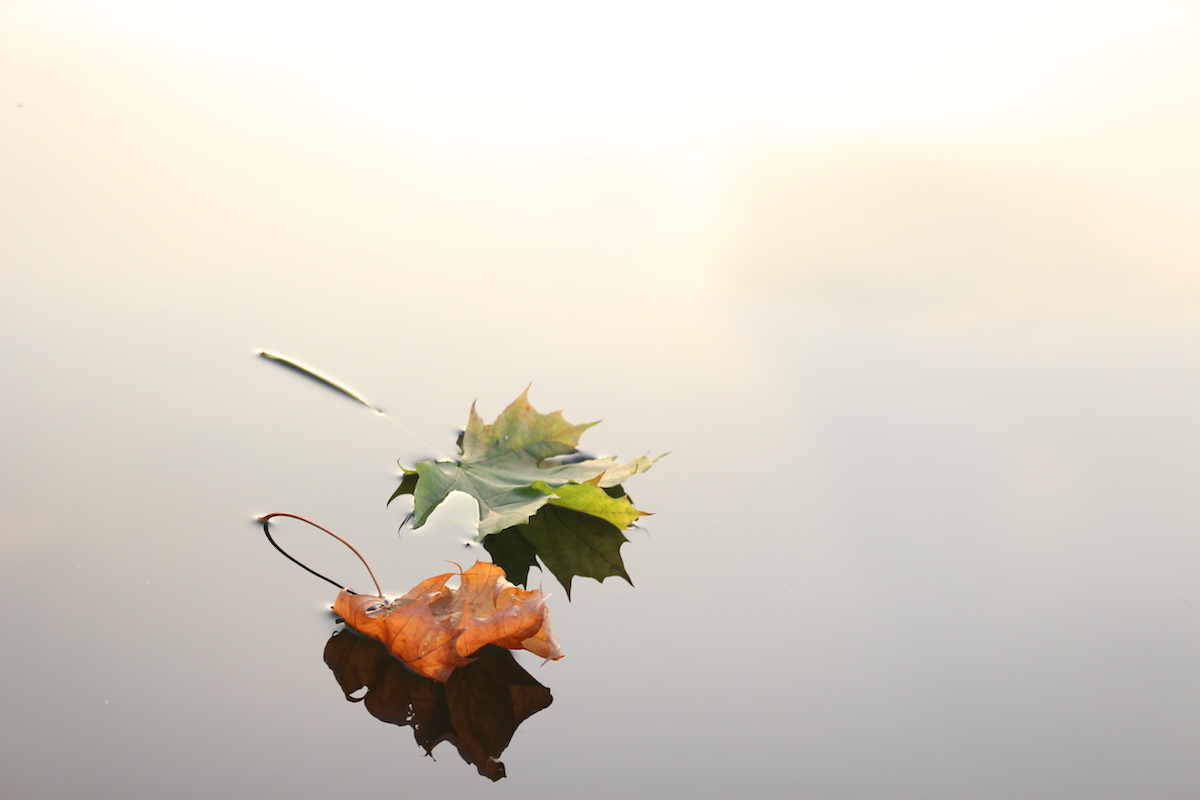
For example, imagine a cold, rainy day when, by eleven o’clock in the morning, your five-year-old daughter has already declared, ten or fifteen times, that she is bored and has absolutely nothing to do. March outside in your rain gear and use a measuring cup to collect a cup of fresh water. Come back inside and use it to water a plant in your home. Talk to her about how our loving God gives water to us and to the grass, plants and animals. Lead the conversation to how much He must love us and how we use water in events like baptism and during the Feast of Theophany.
You can even hop online together and view the icon of Theophany. Imagine a warm, pleasant Friday night when your teenage son is a bit down because his friends are working or have other plans. Take the reins, take no refusal and take an impromptu road trip to the beach, grabbing a pizza or something else fun to eat along the way. When you hit the beach and are listening to the awesome sounds of the ocean in the darkness (and eating that awesome pizza), in your own creative way, let him know that God’s love is as big and mysterious as the beach at nighttime, just like your love for him. He might make fun of you or even scowl—who cares? He won’t forget you said it. Down the road, he’ll think about it and, just perhaps, experience a sort of “perfect exhilaration” when realizing just how much he’s loved. These are the types of ideas I have in mind—simple things with a dash of creativity that take advantage of certain moments, circumstances or opportunities. The best lessons are the ones that don’t seem like lessons. They just require a little thought, energy, guidance and nudging.
With all we say to our children, of all ages, it’s helpful to be intentional but not didactic. Even our youngest ones can smell a lecture coming from a mile away, and they’ll run for the hills. Remember, too, that everything doesn’t have to be said in one conversation. There will be other talks, other opportunities. If you’d like something more detailed, you can revisit the blustery fall day I mentioned earlier through a simple activity called “Seeing Fall Colors with New Eyes.” Find it online here: www.stphilipnh.org/ministries/for_your_home.php. It is from the youth pages of my parish’s website, and it was, like this whole article, inspired by that special moment I described to you earlier. Of course, it is based on a region that experiences fall foliage. If you don’t live in such an area, just get creative, utilizing the innate beauty of God’s creation wherever you call home.
I hope that in some small way this helps you rise up to St. Chrysostom’s “little church” challenge. In the end, if you approach this endeavor with all your heart, soul, strength and mind, your little church is already well on its way to being built.
Rev. Fr. Alex Chetsas serves at St. Philip Greek Orthodox Church in Nashua, New Hampshire. He enjoys working with his creative and faithful colleagues at St. Philip to help bring the parish’s children and families closer to God.
The title phrase “Bring It On Home” is from the song written by Willie Dixon in the 1960s and recorded by various blues artists, as well as Led Zeppelin.
Like what you’re reading? Visit the Religious Education Department to view back issues of PRAXIS and learn how to subscribe. You may also contact the Department of Religious Education by phone at (646) 519–6300 or by email at [email protected].
